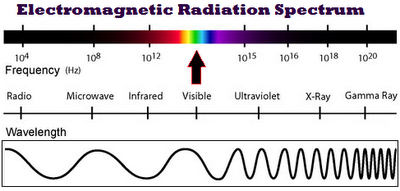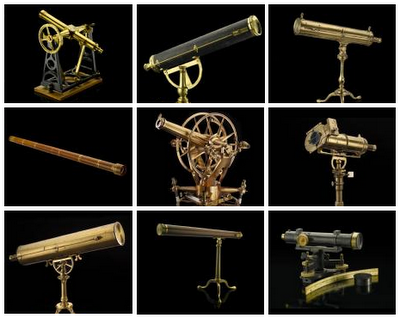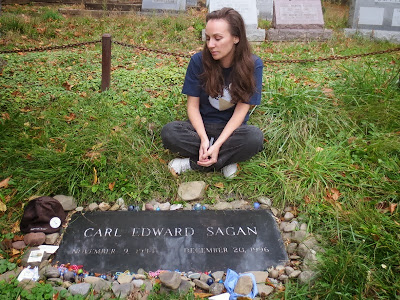
I occasionally check the
NASA Connect pages for new things... and my, what an explosion over the past year! However, their list is slightly out-of-date. Truly, they need someone like me to curate this for them -- alas, no one has made me QUEEN yet.
I was one of those folks who didn't quite understand Twitter when I signed up to Tweet, but over time have seen the fascination with micro-blogging in the 140-character culture. So! If you're interested in keeping up with NASA facilities and missions, here is the full spate of NASA Twitter feeds... along with the current snapshot of followers:
@AsteroidWatch
JPL's Near Earth Objects (Pasadena, CA) -
1,128,870
@AstrobiologyNAI
NASA Astrobiology Institute (ARC) -
881,650
@AstroRobonaut
Humanoid Robot in orbit (ISS) -
63,320
@CassiniSaturn
Saturn Solar System Studies (JPL) -
341,111
@Commercial_Crew
Official Commercial Crew Program (KSC) -
18,329
@ChandraXray
Chandra Observatory (MSFC) -
49,950
@DESERT_RATS
Desert Analog Projects -
45,018
@EarthVitalSigns
Eyes On The Earth (JPL) -
91,314
@HMP
NASA / CSA collaborative Haughton Mars Project (Devon Island, Arctic) -
1,022
@HubbleDaily
Daily Photographs from Hubble Space Telescope (1 of 3 Hubble Accounts) -
11,542
@HubbleTelescope
Hubblesite News for the Hubble Space Telescope (1 of 3 Hubble Accounts) -
25, 465
@InnovateDotNASA
Technology Crowd-sourcing (HQ) -
348
@ISS_Research
International Space Station (ISS) -
77,032
@J2XEngine
J2X Rocket Engine (MSFC) -
2,053
@JPL_Technology
Office of the Chief Technologist (Pasadena, CA) -
555
@KSCLibrary
Kennedy Space Center Research Materials (Cape Canaveral, FL) -
555
@LCROSS_NASA
Lunar CRater Observation and Sensing Satellite (Ames) -
26,775
@LRO_NASA
Lunar Reconnaissance Orbiter (Greenbelt, MD) -
117,904
@MarsCuriosity
Curiosity Rover (JPL / KSC) -
1,472,670
@MarsPhoenix
Phoenix Mars Lander on red planet polar region (JPL) -
221,063
@MarsRovers
Spirit and Opportunity (JPL) -
221,063
@MAVEN2Mars
Mars Atmosphere and Volatile Evolution mission -
24,090
@MESSENGER2011
MErcury Surface Space ENvironment, GEochemistry, and Ranging mission -
35,326
@MorpheusLander
Planetary Lander Prototype (Autonomous Landing) -
7,420
@NASA
News From NASA -
5,780,540
I love that this has nearly 6 million now!
@NASA360
Production Team and TV Show -
33,165
@NASAAmes
Ames Research Center (Mountain View, CA) -
86,782
@NASABeAMartian
Exploration games for planet Mars (JPL) -
3,511
@NASAblueshift
Blogs and podcasts (GSFC) -
36,547
@NASAcio
Office of the Chief Information Officer -
4,742
@NASAData
Public NASA datasets catalog -
1,746
@NASADryden
Dryden Flight Research Center (Edwards, CA) -
72,761
*Note this center has recently been renamed to NASA Armstrong
@NASAedu
NASA Education Resources (HQ) -
23,057
@NASAFermi
Fermi Gamma-Ray Space Telescope -
25,810
@NASAGISS
Goddard Institute for Space Studies (GSFC New York) -
1,187
@NASAglenn
Glenn Research Center (Cleveland, OH) -
4,447
@NASAGlory
Glory Mission Energy Balance -
6,303
@NASAGoddard
Goddard Space Flight Center (Greenbelt, MD) -
135,623
@NASAhistory
History of NASA (Washington DC) -
129,621
@NASAHumanHealth
Human Health and Performance Center -
1,546
@NASAHurricane
Hurricane / Cyclone Watch (Greenbelt, MD) -
302,735
@NASAIVV
Independent Verification and Validation Facility (Fairmon, WV) -
155
@NASAJPL
Jet Propulsion Laboratory (Pasadena, CA) -
562,383
@NASAJPL_Edu
Resources for Teachers/Students + Internship opportunities (Pasadena, CA) -
30,872
@NASAJuno
Jupiter Mission (JPL) -
46,877
@NASAKennedy
Kennedy Space Center (Cape Canaveral, FL) -
595,040
@NASAKepler
Kepler Mission (Ames) -
329,468
@NASALADEE
Lunar Atmosphere and Dust Environment Explorer lunar mission (Ames) -
37,730
@NASALaserComm
Laser Communication (LLCD & LCRD) Demonstration Missions (GFRC) -
701
@NASAMightyEagle
Robotic Lander Prototype (MSFC) -
720
@NASANPP
Suomi NPP Polar orbiting satellite (GSFC) -
7,455
@NASANuStar
Nuclear Spectroscopic Telescope Array (CalTech) -
7,320
@NASAOIG
Office of the Inspector General (Washington D.C.) -
735
@NASAPeople
NASA workers and outreach to participants of NASA projects -
3,113
@NASAPrize
Centennial Challenge (Washington D.C.) -
329,468
@NASASCaN
Space Communications and Navigation (JPL) -
295
@NASAScienceCast
Short videos of science topics and missions -
5,014
@NASASocial
Live-tweeted mission events at NASA socials (formerly "Tweetups") -
110,102
@NASASolarSystem
Planetary Science Division -
14,590
@nasaspaceplace
Space Place for elementary school students (JPL) -
8,909
@NASASpinoff
NASA-Derived Technologies on Earth -
34,178
@NASAspitzer
Spitzer Space Telescope, the infrared Great Observatory -
24,444
@NASAStennis
Stennis Space Center (Michoud, MS) -
34,905
@NASASwift
Study of gamma ray bursts, X-ray, ultraviolet, afterglows -
2,803
@NASATechBriefs
Engineering solutions for design and manufacturing -
10,897
@NASATechPartner
Public & private technology partnerships and collaborations (Moffett Field, CA)-
151
@NASAVoyager
Voyager I and II Spacecrafts -
70,642
@NASAWavelength
Science Mission Directorate educational materials (HQ) -
1,048
@NASAWebbTelescp
James Webb Telescope (Greenbelt, MD) -
107,150
@NASAWhatonEarth
Earth science news team (Greenbelt, MD) -
7,403
@NASAXrocks
NASA X Television Show (Hampton, VA) -
1,97607,150
@NASA_Airborne
Airborne Science Program -
7,989
@NASA_APPEL
Academy of Program / Project & Engineering Leadership (Washington, DC) -
14,201
@NASA_ARES
Astromaterials Research and Exploration Science Directorate (JSC) -
28
@NASA_Astronauts
Updates on astronaut activities -
232,330
@NASA_Dawn
Ion propulsion craft on mission to Asteroids (Vesta/Ceres) -
21,299
@NASA_eClips
NASA Educational Short Films -
8,211
... Ha, get it? ECLIPS? ;) Nice.
@NASA_Edge
Production Team and TV Show -
48,895
@NASAenvcomm
NASA Environmental Management -
3,572
@NASA_EO
Earth Observatory (Greenbelt, MD) -
115,050
@NASA_es
NASA en español; News from NASA in Spanish -
72,685
@NASA_GESDISC
Goddard Earth Sciences Data (GSFC) -
4,232
@NASA_Giovanni
Geospatial Interactive Online Visualization & Analysis Infrastructure (GSFC) -
1,224
@NASA_Hubble
Hubble Space Telescope (HST) (1 of 3 Hubble Accounts) -
52,287
@NASA_ICE
ICESat: Ice, Cloud, and Land Elevation Satellite -
36,820
@NASA_Johnson
Johnson Space Center (Houston, TX) -
192,700
@NASA_LandSat
Earth Satellite Missions managed by NASA and USGS (Greenbelt, MD) -
16,185
@NASA_Langley
Langley Research Center (Hampton, VA) -
93,526
@NASA_Lunar
Moon science (Ames) -
52,374
@NASA_LSP
Launch Services Program
(KSC) -
25,217
@NASA_Marshall
Marshall Space Flight Center (Huntsville, AL) -
59,270
@NASA_MMS
Magnetospheric Multi-Scale mission (GSFC) -
3,874
@NASA_NAS
Advanced Supercomputing Division (Moffet Field, CA) -
800
@NASA_NEEMO
NASA Extreme Environment Mission Operations (Atlantic Ocean!) -
14,924
@NASA_NSSC
Shared Services Center at Stennis (Michoud, MS) -
3,895
@NASA_OOREOS
Organism/Organic Exposure to Orbital Stresses nanosatellite (Ames) -
2,620
@NASA_Orion
Deep Space Human Exploration Spacecraft / Capsule -
62,057
@NASA_Rain
GPM / TRMM Precipitation Measurement missions (GFSC) -
5,185
@NASA_SatServ
Satellite Servicing Capabilities Office (Greenbelt, MD) -
4,122
@NASA_SDO
Solar Dynamics Observatory (Greenbelt, MD) -
15,752
@NASA_SLS
Space Launch System heavy launch vehicle (Huntsville, AL) -
264
@NASA_SMAP
Soil Moisture Active Passive Mission (JPL and GSFC) -
264
@NASA_SpaceGrant
National Space Grant College and Fellowship Program -
205
@NASA_Supercomp
Supercomputers and scientific discoveries -
4,785
@NASA_STI
Scientific and Technical Information -
17,460
@NASA_Technology
Space technology at NASA (Washington D.C.) -
214,092
@NASA_TV
NASA Television Programming Schedule -
5,277
@NASA_Wallops
Wallops Flight Facility (Wallops Island, VA) -
57,495
@openNASA
Transparent Communication for the space agency (Washington D.C.) -
2,297
@PlanetQuest
Exoplanet Exploration Program (JPL) -
37,214
@scijinks
Global Weather Patterns (JPL) -
4,490
@SOFIAtelescope
NASA Stratospheric Observatory For Infrared Astronomy -
26,674
@VanAllenProbes
Mission to Earth's radiation belts -
3,365
@WISE_Mission
Wide-field Infrared Survey Explorer mission / NEOWISE asteroid hunter -
22,360
@WomenNASA
STEM outreach for young women students -
6,718
Wow, 115 Twitter accounts, and still adding more!
Interestingly, the only NASA feeds with more followers than the administrative accounts of the centers are the
Mars Science Laboratory Curiosity Rover and
Asteroid Watch! It would seem the two largest human interests are: exploring and keeping up with what might be smashing into Earth.
The feed that has showed the most explosive growth over the past two years?
NASA Voyager, screaming from under 800 in 2010 to over 70 thousand today!
Note, the above list does not include individual astronauts, as many have left NASA over the years, of course. For a full list of all tweeting current and former astronauts from various agencies, see the
master list and forum at CollectSpace.
Space Unites also compiled a wonderful list of all the main
Twitter accounts of all the Space Agencies Worldwide.































































































